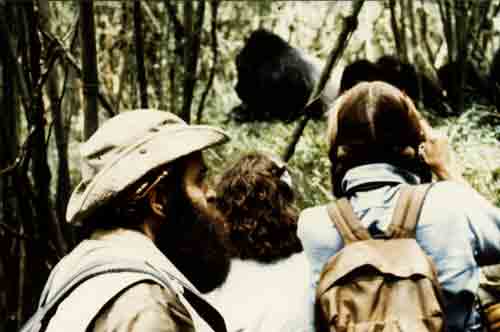Great Apes
Great Apes
Great apes are interesting animals and very challenging to provide for in a zoo setting.
These studies and visions range from aspirational to practical for gorillas, chimpanzees and orangutans in zoos, sanctuaries, and research facilities.
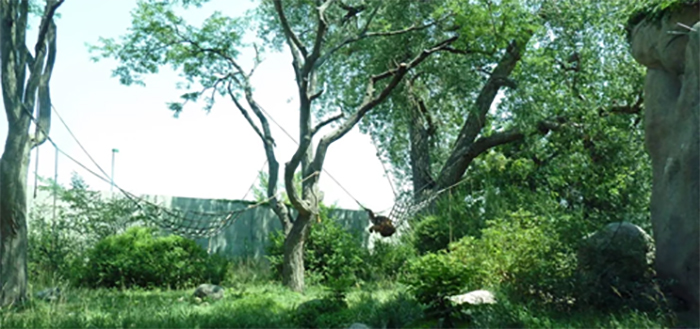
Although real plants are hard to have in orangutan exhibits, some zoos can keep large trees alive for orangutans to enjoy. Orangutan exhibit, Primate Panorama, Denver Zoo. Photo: Denver Zoo.
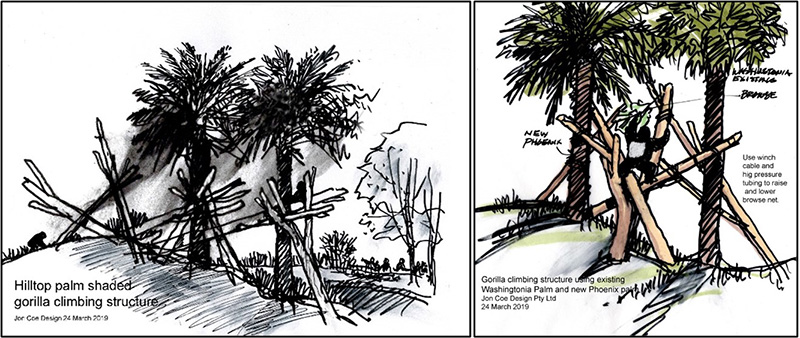
Simple artifical Shade for gorillas shown in Jon’s concepts for Werribee Open Range Zoo.
Papers on theory and design of great ape facilities
Coe, Jon C., 1983. A Greensward for Gorillas n AAZPA 1983 Annual Conference, Wheeling, WV, pp 117-121. Abstract
Coe, Jon C. & Maple, Terry L., 1984. “Approaching Eden: A Behavioral Basis for Great Ape Exhibits” (PDF file 1.84mb) in AAZPA 1984 Annual Conference Proceedings, American Association of Zoological Parks and Aquariums, Wheeling, WV, pp. 117-128. Abstract
Coe, Jon C., 1989. “Naturalizing Habitats for Captive Primates” in Zoo Biology, vol. 8, no. S1, pp. 117-125.
Coe, J. C., 1989. The Genesis of Habitat Immersion in Gorilla Exhibits, Woodland Park Zoological Garden & Zoo Atlanta, 1978-88. (Published 2006 http://www.joncoedesign.com.) Abstract
Coe, Jon C., 1992. “Advances in Facility Design for Great Apes in Zoological Gardens” in Chimpanzee Conservation and Public Health, J. Erwin, John C. Landon, eds., 1992 Diagnon Corporation/ Bioqual, Inc., Rockville, Maryland, pp. 95-102.
Coe, Jon C., 1994. “Orangutan Housing and Exhibition: Recent Trends” in proceedings of The International Conference on Orangutans: The Neglected Ape. J. Ogden, L. Perkins, L. Sheeran, Eds., California State University, Fullerton, CA. Abstract
Coe, Jon C., 1995. “Giving Laboratory Animals Choices” in Lab Animal Magazine, Vol. 24, No. 7:41-42.
Coe, J. C., Lindburg, D. G., 1995. “Ark Design Update: Primate Needs and Requirements” in Conservation of Endangered Species in Captivity, An Interdisciplinary Approach, Gibbons, E. F., Durrant, B. S., Demarest, J., Eds., State University of New York Press, pp. 445-57.
Coe, J. C., LaRue, M., 1995. “Orangutan Facility Design, Future Direction and Today’s Choices” in Orangutan Husbandry Manual, Orangutan Species Survival Plan, American Zoo and Aquarium Association, Bethesda, MD.
Coe, Jon C., 1996. “One Hundred Years of Evolution In Great Ape Facilities in American Zoos” in Proceedings of The AZA 1995 Western Regional Conference, Denver, CO, American Zoo and Aquarium Association, Bethesda, MD. Abstract
Coe, Jon C., 1998. “Chimpanzee Choices”, Keynote Address, Chimpanzoo Conference Proceedings, Jane Goodall Institute, Vol. 1, pp. 17-18. Abstract
Coe, Jon C., 1999. “Increasing Affiliative Behavior between Zoo Animals and Zoo Visitors” in 1999 AZA Convention Proceedings, American Zoo and Aquarium Association, Silver Spring, MD, pp. 216-220. Abstract
Coe, Jon C., Scott, Dwight, Lukas, Kristen, 2009. “Facility Design for Captive Multi-male and Bachelor Gorilla Groups” in Zoo Biology, Volume 28, Number 2 (March/April issue) pages 144-162. Abstract. Available at Zoo Biology website.
Great Apes Exhibits of Note
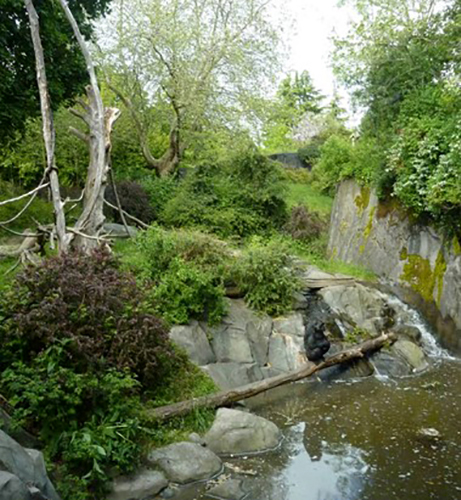
Naturalistic Gorilla Exhibit at Woodland Park Zoo
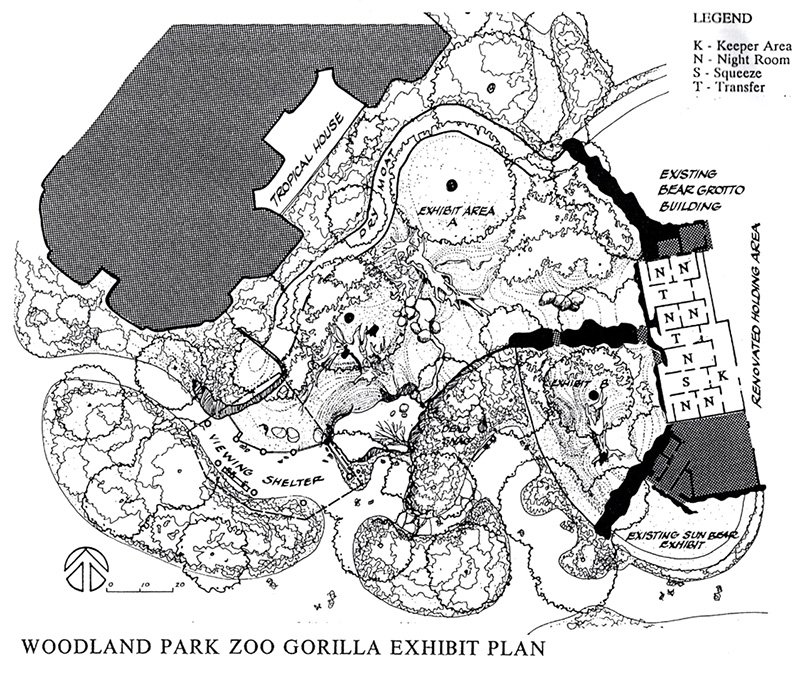
Further discussion of the work at Woodland Park Zoo can be found here.
- Gorilla Exhibit, Woodland Park Zoo, Seattle, Washington, 1978, J&JG
- Gorilla & Orangutan Exhibits, Denver Zoo, Colorado, 1987, J&J
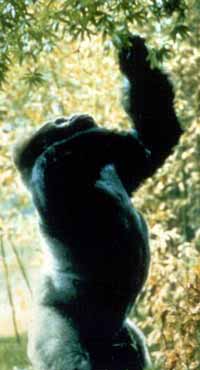
Gorillas of Cameroon in the Ford African Rain Forest
ASLA 1988 Significant Achievement Award
Zoo Atlanta Gorilla facility houses 20 gorillas, having produced 24 gorillas since opening in 1988. The outdoor habitat area is 7300 sqm (1.8 acres) and is broken up into five separate areas of different sizes, one of which is not visible to guests. The different family troops can be moved to different habitat areas to provide novelty and different natural features. This facility was designed by Jon with his previous partner Gary Lee and the CLRdesign team headed by Nevin Lash. In collaboration with then director and noted great ape expert Dr Terry Maple.
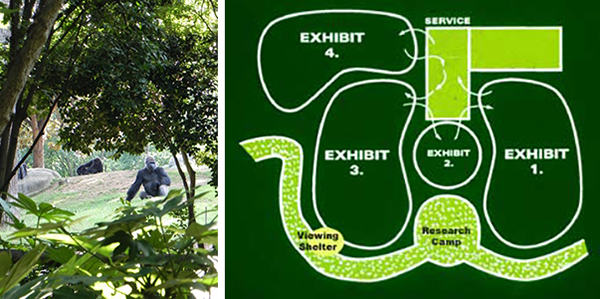
The different family troops can be moved to different habitat areas to provide novelty and different natural features. This facility was designed by Jon with his previous partner Gary Lee and the CLRdesign team headed by Nevin Lash. In collaboration with then director and noted great ape expert Dr Terry Maple.
State-of-the-art holding areas allowed gorilla troops to be rotated among the habitats on a daily basis. This option was successfully tested by Dr. Kristin Lukas as a research project.
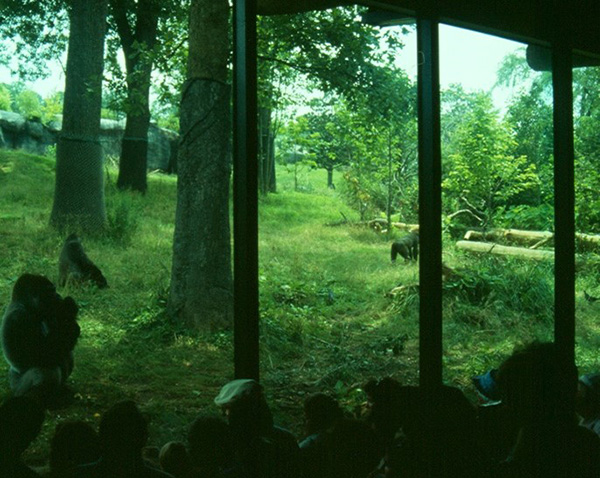
From the comfort of the viewing shelter visitors can see gorillas in four different habitats separated by invisible barriers.
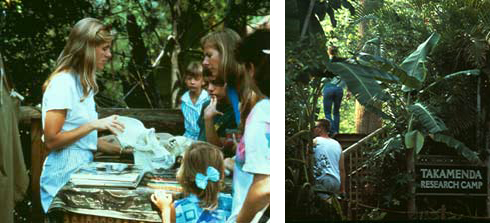
The strength and realism of the immersion experience benefited from an African research safari to Korup National Park and Campo Forest Reserve in Cameron, West Africa to study wild gorilla habitat. The safari was lead by Zoo Atlanta General Curator Detrich Schaaf. Jon documented his field observations with photos, journals, sketchers and field poems, which were used to enhance project design.
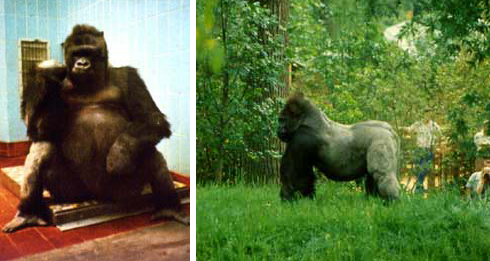
With the new facilities, the previously solitary silverback gorilla “Willie B” was successfully socialized and sired five healthy gorillas – the oldest silverback to ever do so. “Ivan” another senior solitary male was also successfully socialized in this flexible facility. When Willie B died in 2000 at the age of 41, 7,000 Atlantans attended an impromptu memorial service at Zoo Atlanta, a testament to the power of a great gorilla and a compelling, respectful display.
Dedicated Zoo Atlanta staff have successfully managed the production of 13 gorilla offspring at the Gorillas of Cameroon facility.
Jon Coe and Gary Lee, Principals in CLRR (later CLRdesign, inc.) lead the design team, which included Nevin Lash and Barbara McGrath. CLRR were consultants to Turner Associates., Atlanta Architects.
- Gorilla & Orangutan Exhibits, Zoo Atlanta, Georgia, 1988, J&J
- Chimpanzee Exhibit, Detroit Zoo, Detroit, Michigan, 1988, CLR
- Gorilla, Orangutan and Chimpanzee Exhibits, Oklahoma City Zoo, Oklahoma, 1992, US

Red Apes of the Forest
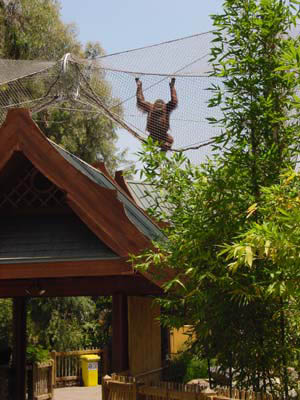
This amazing orangutan exhibit allows the apes to move in a large circle with guests viewing from the center. Two overpass features allow the apes to cross above the guests. This display features Indonesian-style architecture and elevated walkways for the public while the orangutans overhead are contained by a large circular tent of woven stainless steel aircraft cable. Behavioral enrichment features include sway poles and artificial branches which move with the apes as well as artificial vines which can be mechanically raised and lowered by staff for cleaning and provisioning.
Visitors enter through this gateway under the donut-shaped mesh enclosure to view orangutans.
- Red Apes of the Rainforest, Los Angeles Zoo, California, 1995, CLR
- Chimpanzee Exhibit, Los Angeles Zoo, L California, 1995, CLR
- Gorilla Exhibit, Riverbanks Zoo, Columbia, South Carolina, 2000, CLR
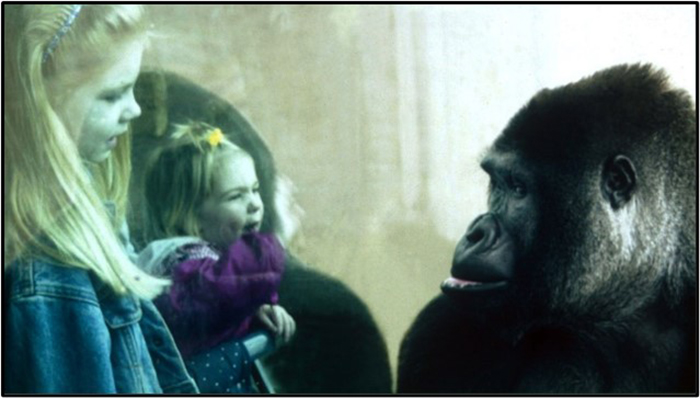
PCO Primate Reserve
On Christmas Eve, 1995, a terrible fire swept through Philadelphia Zoo’s Primate House. All gorillas, orangutans and many species of other primates were lost. CLRdesign, with Principals Jon Coe, John Rodgers and Gary Lee were challenged to develop plans for a “next generation” facility based upon our “activity-based design” concept of integrating operant-conditioning training, behavioral enrichments, husbandry and exhibition for the first time on such a large, $24 million, two-acre project.
Zoo staff, lead by Dr. Andy Baker and Kathy Wagner, envisioned a storyline strongly connected to international in-situ primate conservation projects.
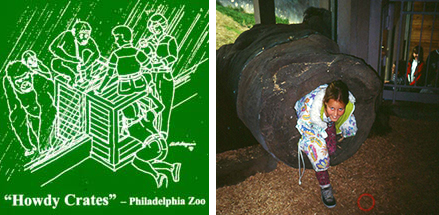
Therefore we developed the storyline of an abandoned tropical lumber mill converted to an in-situ primate sanctuary where orphaned apes would be rehabilitated and surrounding land re-forested. The resulting combination of bright, spacious primate community rooms allow ample up-close viewing…”better than a behind-the-scenes tour”. Indoors and outdoors, winter and summer, day or night the primates enjoy unprecedented levels of behavioral opportunities.
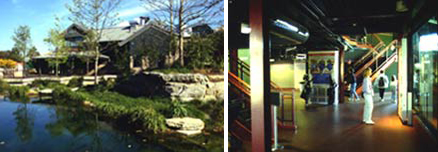
Opened in 1999, this project represented the state-of-the-art in fire protection, smoke evacuation, primate accommodations, and animal management flexibility.
- PECO Primate Reserve (multi species), Philadelphia Zoo, Pennsylvania, 1999, CLR
- Trailways Concept, Center for Great Apes, Florida, 2001, CLR
- Chimp Haven Master Plan, Louisiana, 2001, CLR
- Hilo Orangutan Sanctuary, Concept Plan, Hilo, Hawaii, 2002, CLR
- Gorilla Forest Exhibit, Louisville Zoo, Louisville, Kentucky, 2002, CLR
- PECO Primate Reserve (gorilla and orangutan), Philadelphia Zoo, Pennsylvania, 2002, CLR
- Orangutan Overhead Line, Zoo Guadalajara, Mexico, 2013, JCD
- Gorilla Shade and Shelter Study, Werribee, Victoria, Australia, 2019, JCD
